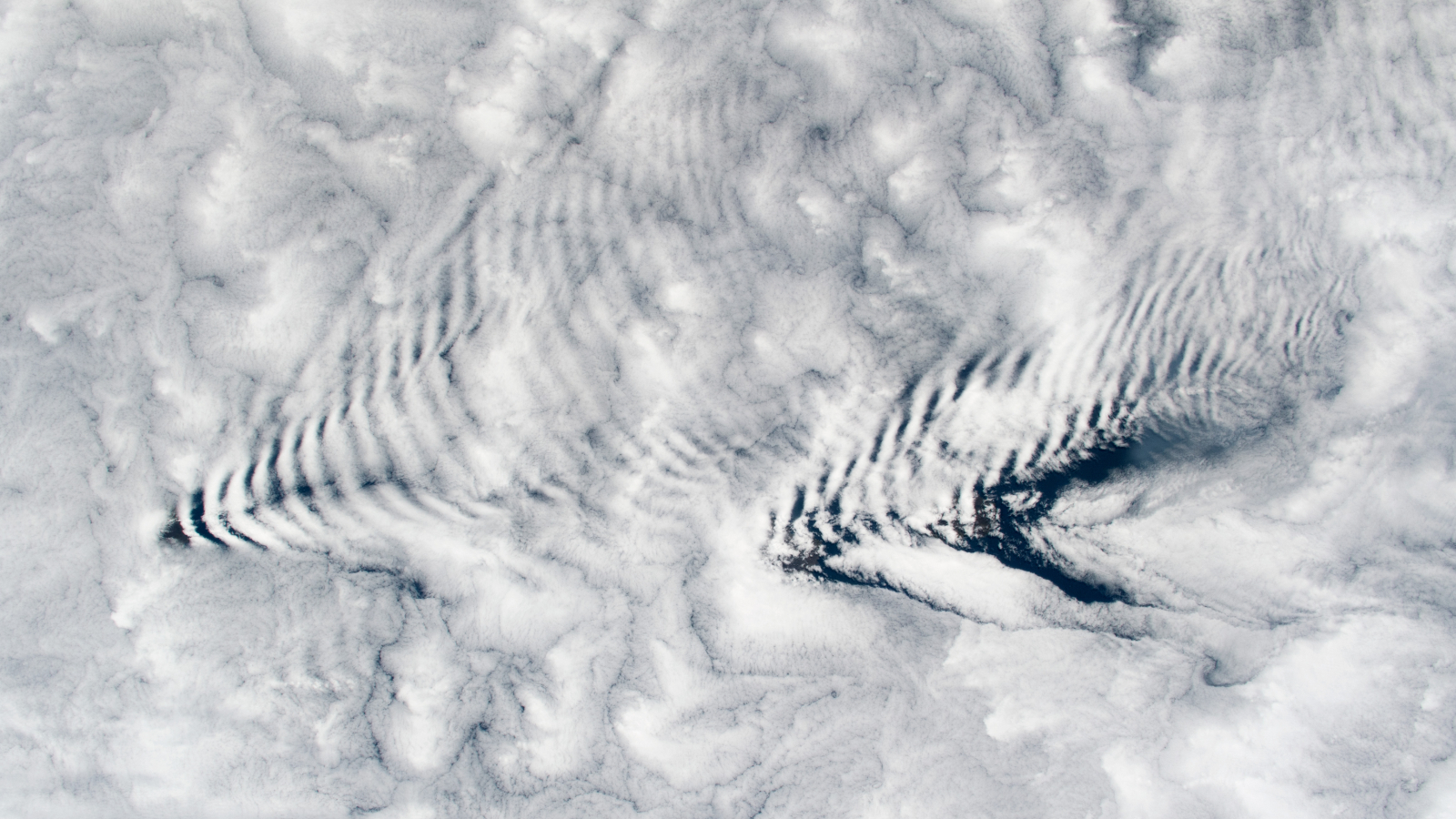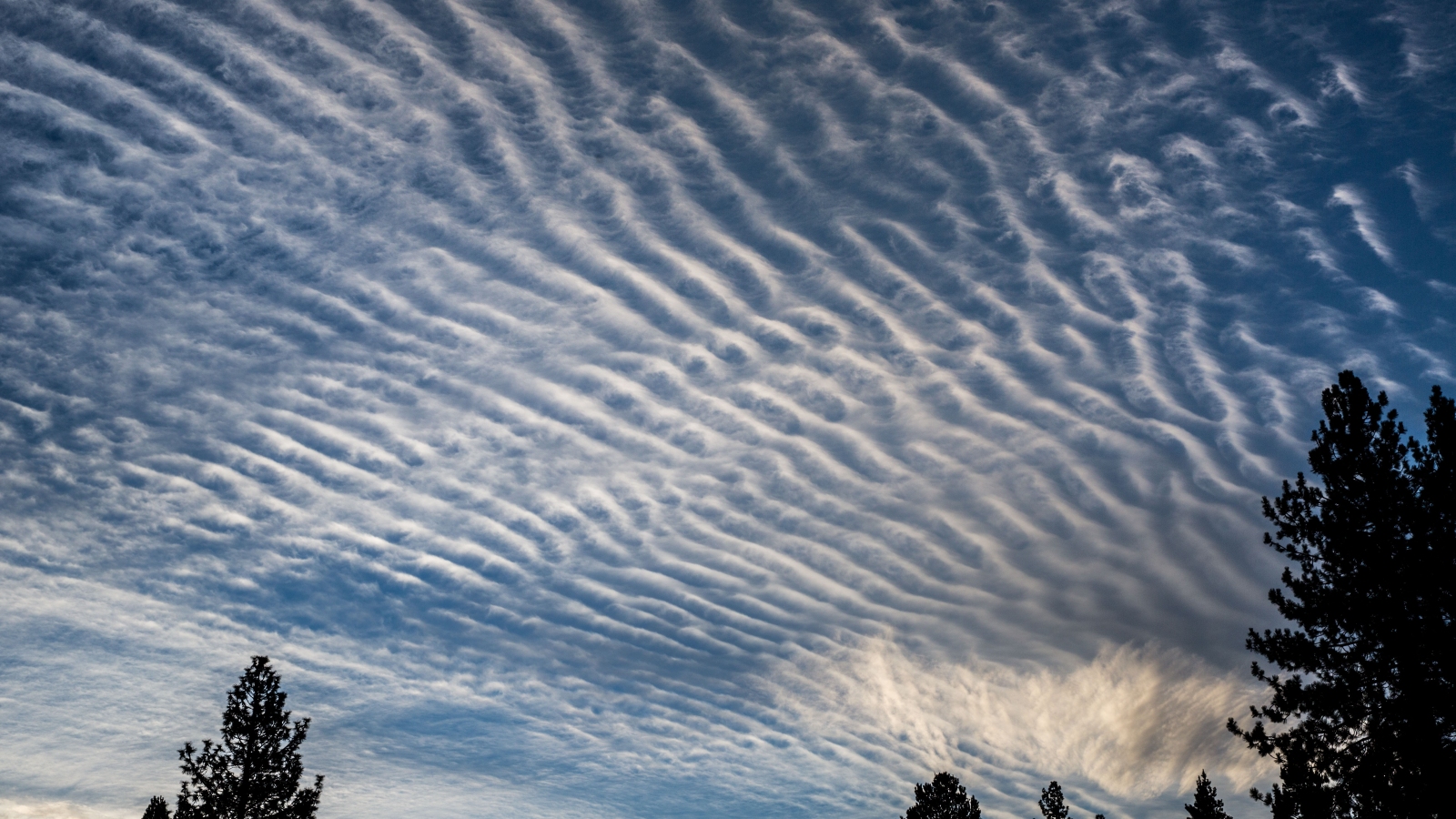
Where is it? The Crozet Islands in the Southern Ocean. [-46.41255591, 51.99872352].
What's in the photo? A pair of wave clouds formed by island mountains.
Who took the photo? An unnamed astronaut on board the International Space Station.
When was it taken? Jan. 8, 2023.
This 2023 astronaut photo captures the striking beauty of a pair of perfectly aligned, arrow-shaped wave clouds rippling above the Crozet Islands — an archipelago of uninhabited French islands in the Southern Ocean, located roughly halfway between South Africa and Antarctica.
Wave clouds are repeating bands of cloud and non-cloud that look like wispy streaks floating in the sky when viewed from above or below. These bands are created when stable air moves over raised land. The topography pushes the air upward before gravity pulls it back down, causing the air to oscillate up and down, according to NASA's Earth Observatory.
When the air rises, it cools down, and water vapor condenses into clouds. But when gravity pulls the air downward, it is compressed by increased atmospheric pressure, which heats it up via a process called adiabatic heating and forces any clouds in the air to evaporate, according to the National Oceanic and Atmospheric Administration.
Wave clouds are also known as gravity waves. This should not be confused with "gravitational waves," which are ripples in space-time created by extreme cosmic entities such as black holes and colliding galaxies.
Related: 12 amazing images of Earth from space

The wave cloud on the left of the image is formed by air passing over Mount Marion-Dufresne, a 3,576-foot-tall (1,090 meters) peak on East Island; the pattern on the right is caused by Mascarin Peak, a mountain on Possession Island that stands 3,064 feet (933 m) tall. The two islands are separated by around 10 miles (16 kilometers) of water.
Wave clouds are rare but can be found more often over large bodies of water because the air there is more stable, which makes it more prone to oscillating if it is disturbed, according to NASA.
Similar wave clouds were spotted over the Crozet Islands in 2012 and 2014 but did not look as perfectly aligned as the pair in this photo.
The Crozet Islands are uninhabited apart from a small research station on Possession Island, from where scientists study the islands' more than 5 million penguins and other marine wildlife, according to NASA's Earth Observatory.
In the past, these islands have also temporarily been home to several groups of marooned sailors who survived being shipwrecked by the jagged rocks along the islands' steep cliffs, according to Encyclopedia Britannica. In 1876, half of the 88 passengers and crew onboard the shipwrecked vessel Strathmore survived on Possession Island for seven months before being rescued, according to The New Zealand Herald.







